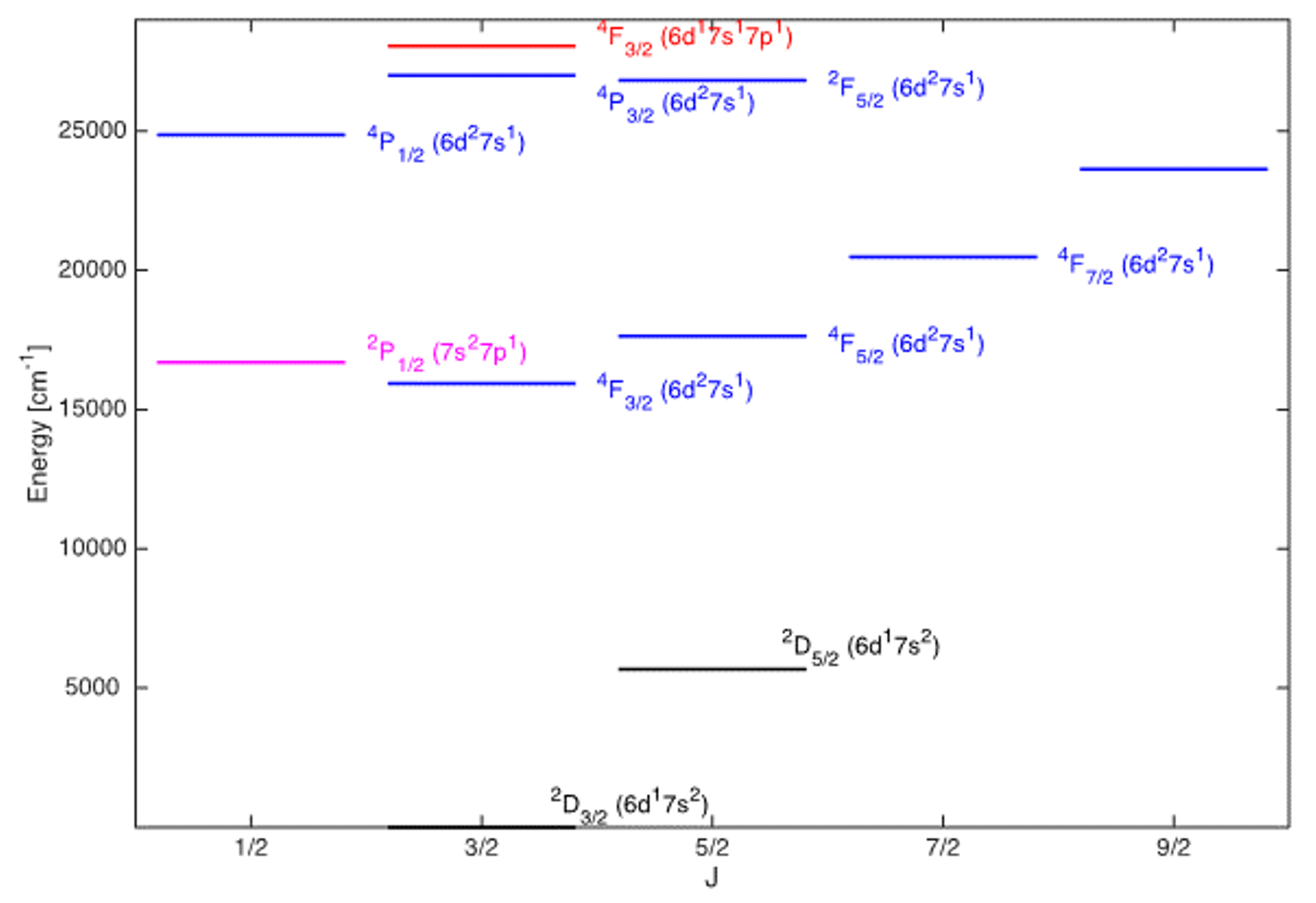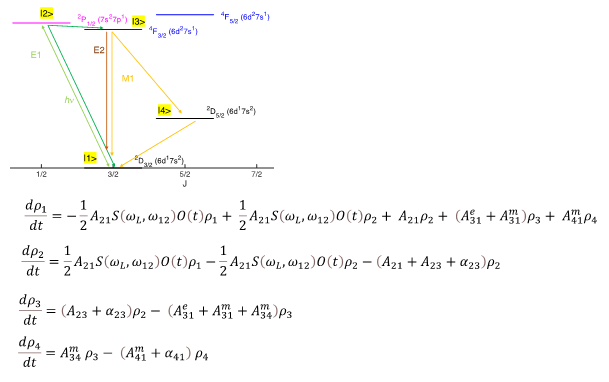THeoretical breakthrough news
 Our latest calculation of the electronic structure of Rf+ (Z = 104) ion shows
that the superheavy element has
great potential for LRC experiments. Based
on relativistic calculation and multi-reference configuration interaction
models, the ground and low-lying excited states are predicted with high accuracy,
yielding the following energy spectrum:
Our latest calculation of the electronic structure of Rf+ (Z = 104) ion shows
that the superheavy element has
great potential for LRC experiments. Based
on relativistic calculation and multi-reference configuration interaction
models, the ground and low-lying excited states are predicted with high accuracy,
yielding the following energy spectrum:
We have identified a single metastable state (4F3/2 6d27s1) that are potentially
good candidate for the optical pumping. For this purpose, we propose two different
optical pumping schemes:
We have identified a single metastable state (4F3/2 6d27s1) that are potentially
good candidate for the optical pumping. For this purpose,
we propose two differen optical pumping schemes:

The first scheme involves pumping the ground state 2D3/2 (6d27s1 ) to the bright excited state 2P1/2 (7s27p1 ) in the visible energy range (600 nm), eventually reaching the metastable state via possible collisional quenching.

The second involves pumping the ground state to the bright excited state (4F3/2 6d17s17p1) in the ultra-violet energy range (330 nm), which effectively feeds the lowest metastable state.
Preliminary study of the rate equation models shows the population of the metastable state as function of the laser pulsed. The results show very good theoretical efficiency for optical pumping scheme #2, whereas collisional quenching between 2P1/2 (7s27p1) and 4F3/2 (6d27s1) may play important role in the mechanism of optical pumping #1. The results have been recently submitted for publication in Phys. Rev. A journal.


